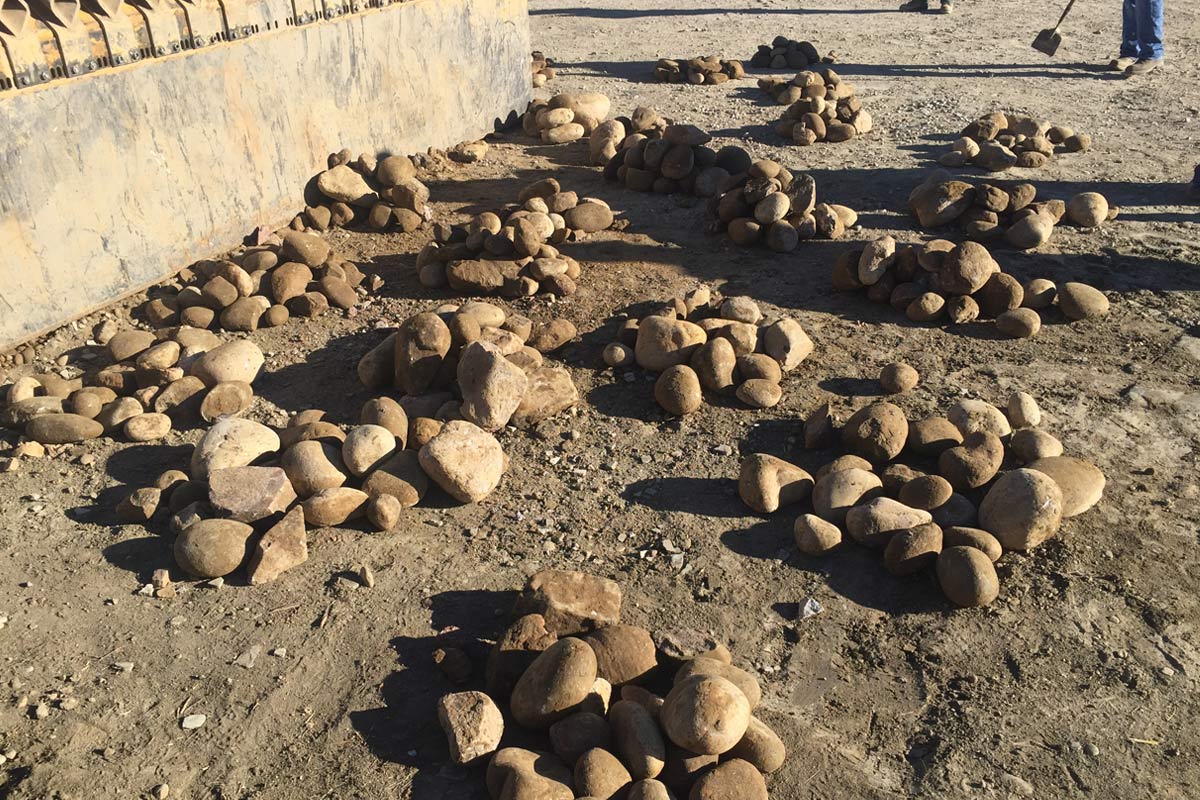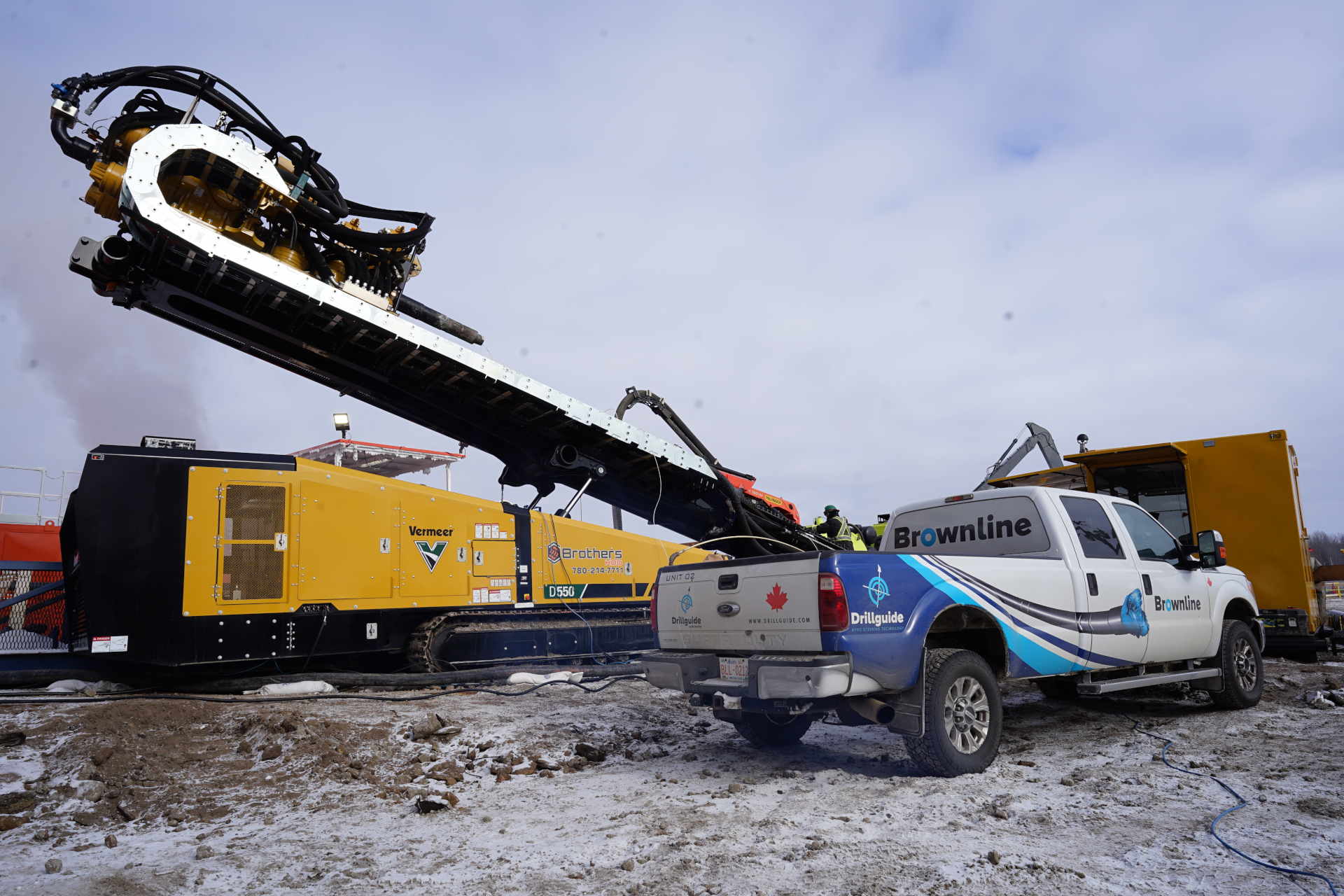Tough Rock Encountered in Texas
 When Nebraska-based contractor Georges Specialty Group (GSG) started anextensive fiber-optic project last year in the City of Carrollton, Texas, theground conditions it dealt with were extremely different from those its crewswork with in its home state.
When Nebraska-based contractor Georges Specialty Group (GSG) started anextensive fiber-optic project last year in the City of Carrollton, Texas, theground conditions it dealt with were extremely different from those its crewswork with in its home state.
“We have good dirt in Nebraska,” Bob Georges, vice president of GSG, said,chuckling. “[In Carrollton,] we had a pretty tough going at times.”
The soils the GSG crews are drilling in are primarily medium rock, such aslimestone and shale. The soils are also hard and dry due to a lack of rain. Thesoil conditions presented a challenge for the long-time drilling contractor.
In July 2004, GSG, Falls City, Neb., began work as the subcontractor onVerizon’s fiber-to-the-premises (FTTP) project in the City of Carrollton.According to Georges, his crews are installing the 1 ¼-in. conduit for thefiber-optics, which are being placed in the conduit afterward. The work isprimarily being done in the residential areas of the city and involves tightjobsites, short bores and crossing multiple utility lines. The pilot hole forthe bores are approximately 3 ½ in. in diameter.
GSG is utilizing its Ditch Witch 2020 drill, which has 20,000 lbs of pullbackforce, and its Vermeer 7x11A, which has 7,800 lbs of pullback force, for theVerizon project. Total crewmembers that are being used throughout the durationof the project are 18 to 20. Georges said that GSG is expected to continueinstalling the conduit well into 2006.
When the GSG crews arrived onsite for the FTTP job, they realized that thesoil conditions were going to be its biggest challenge. “The soils were just sohard that we couldn’t get through the rock,” Georges said, noting the toolingthat the crews were using couldn’t cut it. “We know our Nebraska soils and thiswas pretty tough going.”
Georges along with GSG supervisor Bob Branish and operator/foreman LeroyKirkendall learned early in the project that the tooling and drilling techniquesrequired in the Carrollton project would have to be different than what they hadused in Nebraska. For example, they were limited to approximately 80 or 90 ft ofproductive drilling per day using their existing tooling, they said.
Georges contacted Railhead Underground Products LLC, Fort Worth, Texas, tosee if a change in tooling would improve the drilling situation. He spoke withSteve Stover, one of the sales support personnel with Railhead. After describingthe soil conditions and GSG’s equipment to Stover, Georges agreed to meet withhim at one of the jobsites to see a demonstration of the Railhead tooling.
Most of the shots that are being done on the Carrollton project arerelatively short, ranging from 50 to 300 ft at a time. Branish noted that almostall of the bores are being executed in tight, confined spaces and that the crewsmust also be cognizant of the multiple existing utilities that they must drillparallel to or cross with each new bore path. “The typical bore path is in analley or along a boulevard in residential neighborhoods. The work needed to becompleted with the least amount of disruption as possible,” Branish said.
Branish also described the tough and difficult soil conditions and how theywere affecting the project. “Not only were we having trouble drilling in thetough rocky conditions, the challenges of steering through these soil conditionswith our existing tooling was just short of impossible,” Branish said.
For the demo, Stover used Railhead Incredibit tooling that was designed forthe type of soil conditions that GSG was working in. The tooling also hadaggressive steering capabilities that would allow GSG to bore more efficientlyin the soil.
The demonstration started on one of the typical shots on theproject. With Stover’s direction, GSG was able to bore through the soil anddirect the tooling around the existing utilities. “We were able to complete thebore that day and still have time to move to the next site to set up for thenext day’s work,” Georges said. “We had cut the time required to complete theshot significantly.”
GSG officials say their crews are now averaging 300 to 500 ft per day in thetough rocky conditions typical of this project and along the way eliminatedwasted time due to unsuccessful bores.
“I don’t enjoy the rock, but it had to be drilled,” said Branish. “We havedrilled over a mile with the Railhead on our Ditch Witch 2020. We’re wearing outchisel points on the jack hammers and we still haven’t seen any significant wearin the Railhead tooling.”
GSG is using the Incredibit on its Ditch Witch and Vermeer drills, as well asRailhead Endurance tooling on its other Vermeer 7×11 that is being used ineasier soil conditions for the project.
Dave Helgeson is director of sales and marketing for Railhead UndergroundProducts, which is headquartered in Fort Worth, Texas.




